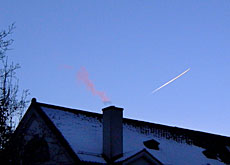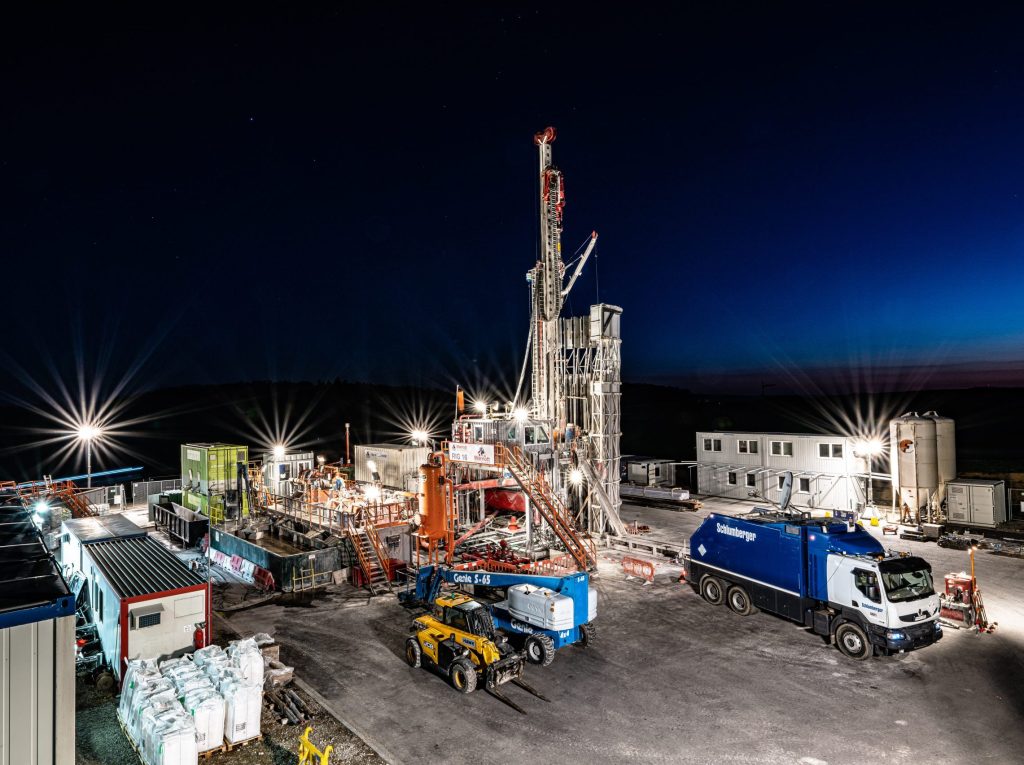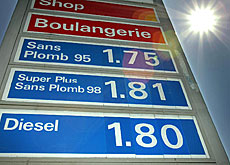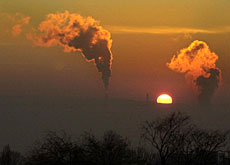New air pollution limits introduced

Switzerland has set itself new air pollution limits based on the Göteborg Protocol, which came into effect in the country on Tuesday.
The environment ministry says current legislation should allow targets set out in the international accord to be met by 2012.
Switzerland has agreed to cut sulphur emissions by 40 per cent compared with 1990 levels, nitrous oxide (NOx) output by 52 per cent, ammonia emissions by 13 per cent and volatile organic compounds (VOCs) by over half.
The aim is to reduce summer smog and the presence of ozone. The environment ministry hopes that by 2010 air quality will greatly improve in urban areas, especially in the southern canton of Ticino, which is largely affected by cross-border traffic with Italy.
“When the 31 countries that signed the protocol have applied it, sulphur emissions in Europe will fall by 60 per cent, and emissions of ozone precursors – NOx and VOCs – will drop by 40 per cent,” said the ministry in a statement.
To enforce the protocol’s guidelines, the Swiss will not have to introduce new legislation.
“Based on current figures, we should reach our targets if we continue to apply the law in a consequent fashion, especially air protection measures and pollution limits for motor vehicles,” added the ministry.
This was not the case for the Kyoto Protocol on greenhouse gas emissions.
To have a chance of reaching the aims set out in the accord – to cut carbon dioxide emissions to ten per cent below 1990 levels by 2010 – the Swiss introduced a climate levy of 1.5 centimes per litre of petrol or diesel in October.
If these measures prove inadequate a further tax could be levied on fuel for transport.
Looking ahead
The environment ministry, confident it can reach the targets set out in the Göteborg agreement, is looking beyond 2010. The Swiss want to cut down fine particle pollution produced by motors, braking and heating systems.
Research has suggested that the presence of some particles may be enough to cause respiratory disease, some types of cancer, heart conditions and even affect the central nervous system.
The application of the Göteborg protocol should have another welcome effect. Surfaces suffering from acidification – caused by sulphur, nitrogen and ammonia emissions – should be reduced by ten to 15 per cent, to a level one quarter that of the 1990s.
But the environment ministry warns that 60 to 70 per cent of most ecosystems will still accumulate too much nitrogen.
swissinfo with agencies
By ratifying the Göteborg Protocol, Switzerland has committed to cutting some types of atmospheric pollution below 1990 levels.
The following pollutants will see their levels slashed:
Sulphur dioxide by 40%
Nitrous oxides by 52%
Volatile organic compounds by 51%
Ammonia by 13%.
The 1979 Geneva Convention on Long-range Transboundary Air Pollution has been ratified by 49 countries, including Switzerland (1983).
It the oldest international environmental convention.
It has eight additional protocols, including the Göteborg accord.

In compliance with the JTI standards
More: SWI swissinfo.ch certified by the Journalism Trust Initiative











You can find an overview of ongoing debates with our journalists here . Please join us!
If you want to start a conversation about a topic raised in this article or want to report factual errors, email us at english@swissinfo.ch.